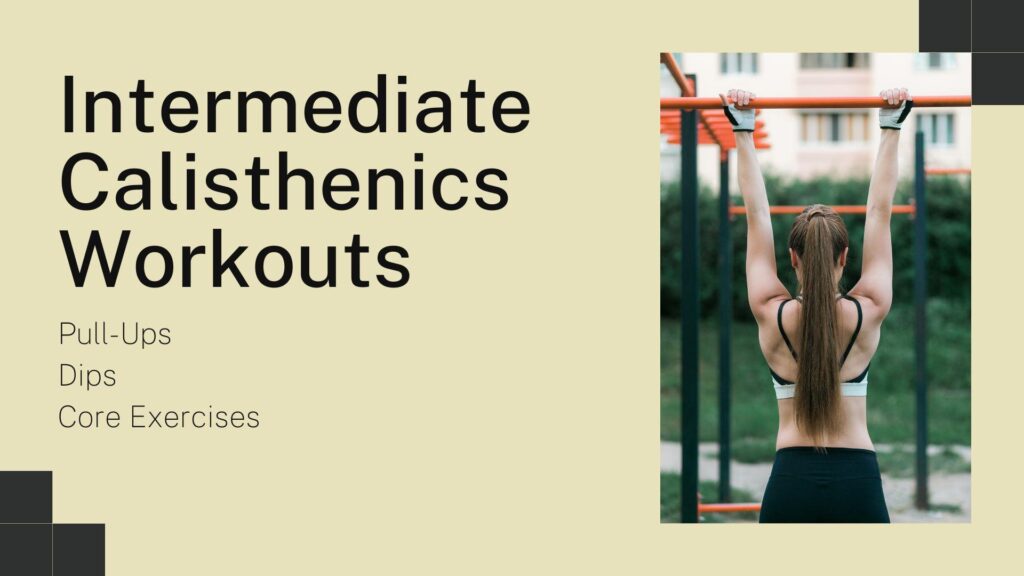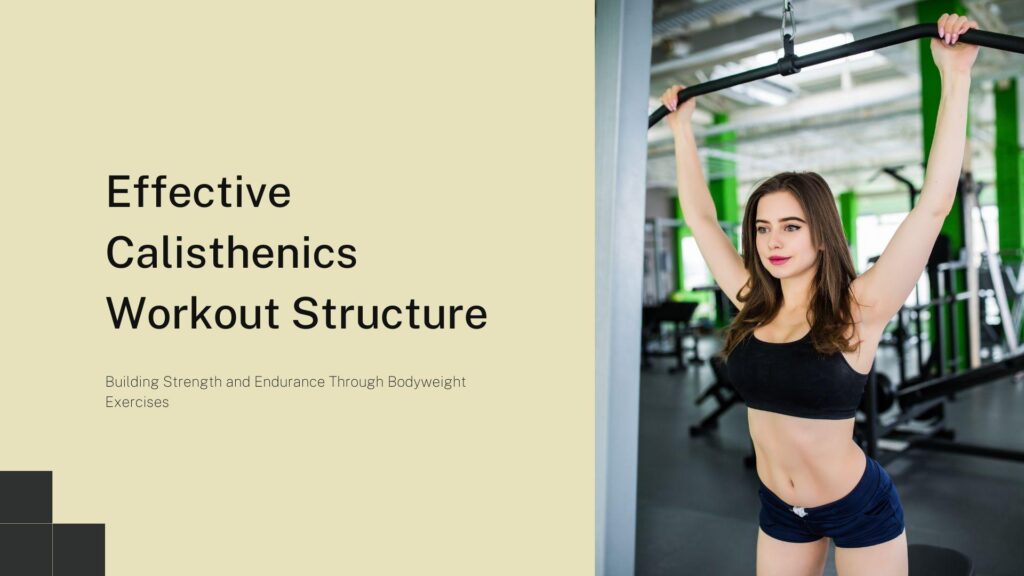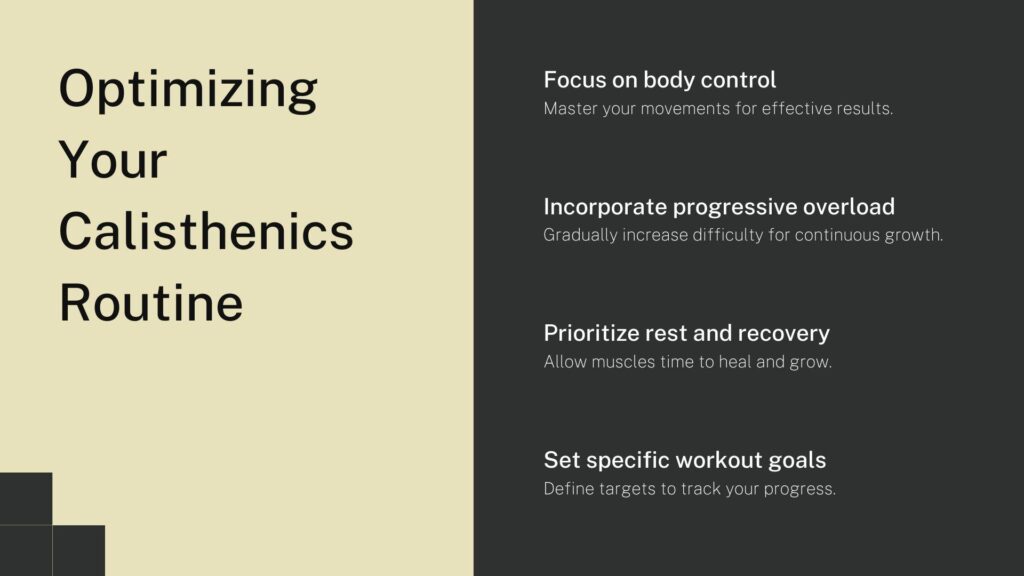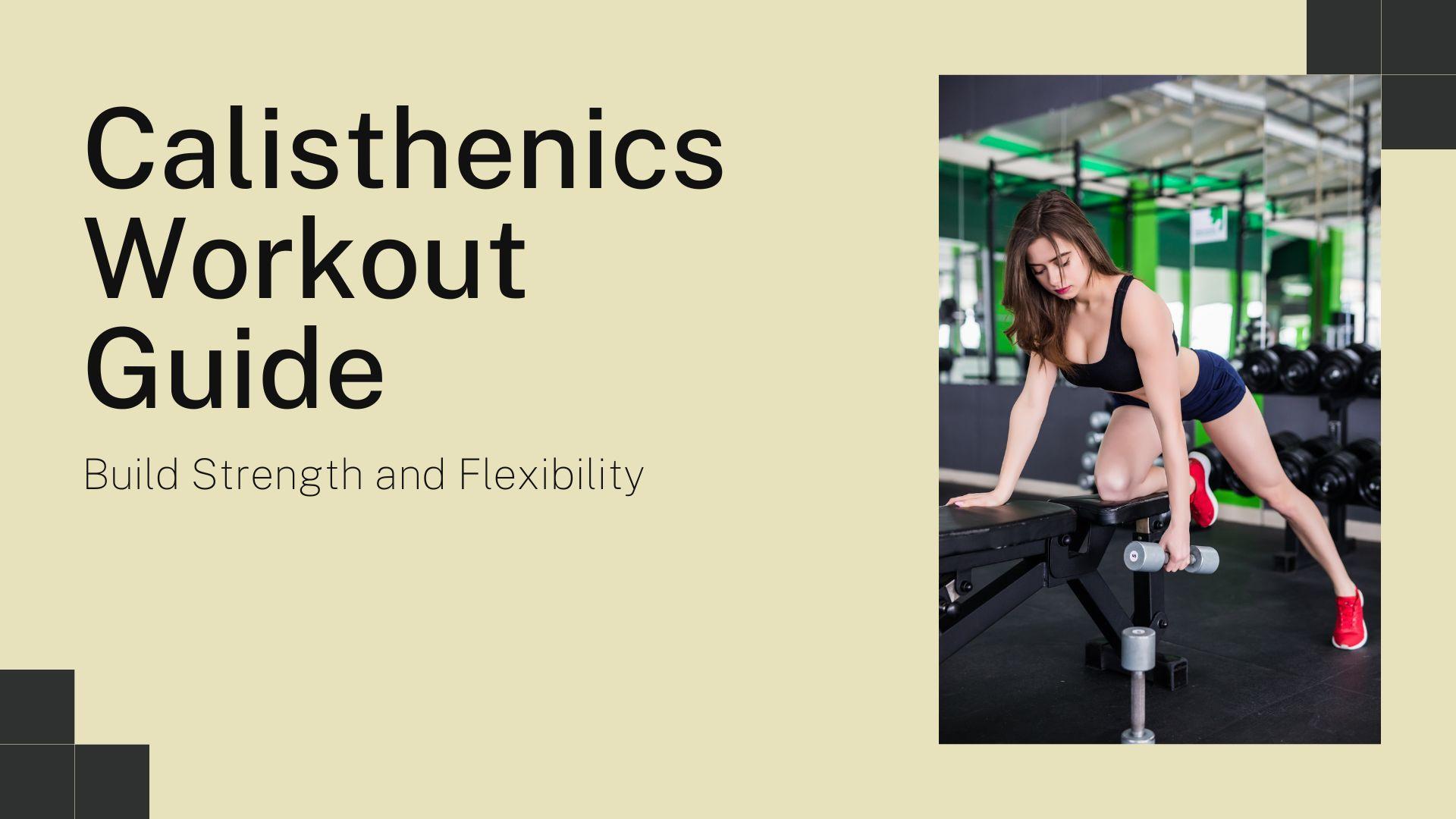Training with your own body weight is the main principle of calisthenics. With its flexibility, this workout form can be done at any place – in your house, at the park, or in health clubs – which shows how it suits all persons, independent of their physical abilities. In this complete tutorial, we’ll cover all information about calisthenics, tools that can enhance your training, fundamental exercises that you can do at every level, how to design a coherent routine, and food and recovery tips that will help you accomplish your fitness goals.
Table of Contents
What is Calisthenics?
Definition and History
Calisthenics is the use of rhythmic movements to work against the body’s own weight. The word originates from the Greek “kalos” (beautiful) and “strenos” (strength). This one has been going for centuries. Though when it goes back to ancient style training are just those that were involved. It came into popularity in the early 20th century with the military training programs and the likes of physical education classes.
Calisthenics provide you with a number of advantages which are as follows:
- Increased Strength: Approaching ones workouts through methodical use of compound movement builds the most effective strength.
- Flexibility and Mobility: A lot of calisthenics exercises do not only work your strength but also give a lot of flexibility and mobility.
- Cardiovascular Health: The cardiac system is strengthened tremendously, both by a high-intensity HIIT workout and moderate levels of weight.
- Availability: It is an affordable method to stay in shape as you do not have to pay any gym fees or spend on equipment.
Calisthenics is scalable to the point where you can customize the exercise for any fitness level and it is suitable for beginners as well as advanced athletes.
Essential Equipment for Calisthenics
Calisthenics which primarily involves fitness enthusiasts’ body weight can also involve performance of bodyweight exercises in combination with several kinds of equipment that serve as additional resistance.
Adjustable Dumbbells
Adjustable dumbbells are a multilingual workout addition to your calisthenics program. They are used for a variety of exercises like curls, tricep extensions, and lunges and are also used as a supplement in motion to make bodyweight moves stronger. To learn more about this item, “Unleashing the Power of Sportneer Adjustable 10 Pound Dumbbells“, you might want to check out our full article. Through the process of progressive overload, these weights will challenge your muscles.
Weight Bench
A fundamental weight bench is another star in calisthenics’ set of equipment. Now you can do the different workouts like elevated push-ups and step-ups that you wish. Furthermore, it can be used in dumbbells-strength training. If you are interested in weight benche authentic use, the article “Best Basic Weight Bench for Home Gym: Cheap and Adjustable” will help you better.
Popular Calisthenics Exercises
| Exercise | Targeted Muscle Groups | Benefits |
|---|---|---|
| Push-Ups | Chest, Triceps, Shoulders | Strengthens upper body + increases core stability |
| Pull-Ups | Back, Biceps | Increased upper body power; vitality of grip strength |
| Squats | Legs, Glutes | Works the lower body; Increases mobility and balance |
| Dips | Triceps, Chest | Upper body pushing strength; works chest, triceps |
| Planks | Core, Shoulders | This will help keep stable, strong core throughout the movement and improves total body strength. |
| Lunges | Legs, Glutes | Strengthens legs, balance and coordination |
| Burpees | Full body | Increases cardiovascular endurance, melts fat |
| Mountain Climbers | Core, Legs | Enhances cardiovascular fitness; Increases core strength |
Best Calisthenics Exercises for Beginners
Provided you’re a calisthenics greenhorn, commencing with the ground level (e.g., fundamental exercises) is an ideal way to start building up strength with a good amount of confidence.
Push-Ups
The apt choice to do the so-called calisthenics will be to do push-ups that take different lifting on the chest, shoulders as well as triceps. Start by;
Your hands are shoulder-width apart as you move from the plank position.Drop your body until your chest almost touches the ground, while pulling the needle through the hole at the corner of the bottom plate.Go back to the original position by exerting an upward force on your hands.
Variations: When you feel ready, take incline push-ups (hands lifted off the ground) or decline push-ups (feet lifted off the ground) into the routine with the meek energetic.
Squats
Squats are excellent exercises that can be done anywhere, and their major focus is on strength building in the lower body. To make a simple squat;
Firstly, find yourself with your legs shoulder-width apart.Try to imagine you are sitting down on a chair while your chest is still up and your knees are behind your toes as you lower your body.Get back to the initial position.
Modifications: Attempt jump squats for a quick boost or pistol squats to make them more difficult.
Planks
Planks are, in fact, crucial for your body balance. To execute a plank:
Get into a forearm plank posture, your elbows should be exactly beneath your shoulders.A straight line from head to heels is the way to keep your body in the correct position.Persist in keeping the plank for the longest time and make it up to 30 seconds, at which point you can buy.
Variations: Include planking on your side to really engage obliques or opt for plank-to-push-up transitions for a greater challenge.

Intermediate Calisthenics Workouts
Once you have mastered the essentials, you can move on to a more demanding variety of exercises.
Pull-Ups
Pull-ups are really hard but worthwhile exercises that help to work and strengthen the upper part of the body, first degree focusing on the back and biceps. Doing a pull-up looks like this:
Hold on a pull-up bar with the palms of your hands turned away (overhand grip).Hang by your arms that should be perfectly straight.Do a pull-up with your legs as the bar’s highest point.Sink down slowly again.
Tips: In the case that you’re feeble in pull-ups, ropes are a cool extension for you to perform the exercise.
Dips
Dips are a great way to emphasize such muscles as triceps, chest, and shoulders. The procedure for carrying out one:
Get away from the parallel bars or find a reliable source.Keep hold of the bars and then lower your body until your elbows make a 90-degree angle.Return your body back to the initial position.
Safety Tip: The key to keeping elbows within range is to protect against strains.
Core Exercises
Make room for different types of core training in your program so that your body can maintain stability and become stronger. For instance:
Hanging Leg Raises: Hang on a bar and bring your legs up to the chest to work the core.Russian Twists: Get the body in a sitting position on the floor, back off a bit, and move from side to side while rotating your torso and holding a weight or medicine ball.

HIIT and Calisthenics
High-Intensity Interval Training (HIIT) can prove to be one of the most effective ways of achieving maximum results in your workout. By adding in calisthenics with HIIT, you can simultaneously get cardiovascular, and muscular advantages.
Combining Calisthenics with HIIT
Calisthenics are one of the most flexible options to be included in HIIT programs. Intense exercise followed by rest periods increases heart rate and calorie burn. Be sure to get some tips and examples from our “HIIT Workouts at Home: The Best Equipment and Exercises” article.
Sample HIIT Calisthenics Routine
- Produce a HIIT training session by doing workouts like:
- Jumping Jacks (30 seconds)
- Burpees (30 seconds)
- Push-Ups (30 seconds)
- Mountain Climbers (30 seconds)
- Rest (30 seconds)
Remember to do this 3-4 cycles for a full-body training session.
Advanced Calisthenics Techniques
For those who would want to step up their training sessions a notch, advanced calisthenics methods would be the best option.
Muscle-Ups
On the one hand, a muscle-up is a combination of a pull-up and a dip, which makes it one of the most difficult calisthenics movements. To do a muscle-up:
Retract the shoulders and pull through a few inches to ignite the movement.With the chin above the bar, the body is supposed to lean forward a bit because that is the point where you are transitioning to the dip.Go down until your elbows are fully extended.
Note: Try to build the necessary power prior to this move by practicing pull-ups and dips exercises.
Handstands and Planche
Both handstand and planche demand both extreme strength, body balance, and regular practice before you can master them. Begin with some of these steps that bring the focus on your core and help build the upper body:
Handstands: Take it easy at the beginning, work slowly but persistently on it against the wall. With time, you can do them with no support to enhance your abilities.Planche: However, more advanced skills and correct movements help you be barely touching the ground with your feet and your body at a level angle to the ground like a planche do not need to emphasize core work.
Structuring Your Calisthenics Workout
The results would be hard to come by if workouts are not well organized.
Creating a Balanced Routine
A balanced workout can be divided into:
- Warm-up: Get yourself ready for the workout with those dynamic stretches and light cardio.
- Strength Training: Most of the good workouts that are based on the weight of your body, the activity work on the different muscle groups.
- Cool-down: Finish a dynamic movement slowly with a smooth, droning movement.
Sample Weekly Workout Plan
- Monday: Upper body focus (push-ups, pull-ups, dips)
- Tuesday: Lower body focus (squats, lunges, glute bridges)
- Wednesday: Core and flexibility (planks, yoga)
- Thursday: HIIT routine (as outlined above)
- Friday: Full-body workout (combination of all exercises)
- Saturday: Active recovery (light walking, stretching)
- Sunday: Rest day
Nutrition and Recovery
To support your body in the process of muscle recovery and in general, you have to eat a balanced diet abundant in whole foods. Concentrate on:
- Protein: This micro-nutrient is required for the repairing of muscles. Try foods such as chicken, fish, legumes, dairy and similar ones.
- Healthy Fats: These are the foods the nutrients needed in hormonal and joint support and, thus they are the healthiest ones. Avocado, nuts, olive oil.
- Complex Carbohydrates: Feed your muscles with the required amount of energy in the workout; include whole grains, fruits, and vegetables.
Importance of Rest
Rest days are critical to recovery. They prevent injuries and help muscles to subsequently adapt and recover. It is important to get enough rest, as it is a key factor in the recovery process and also in overall well-being.

Calisthenics Success Stories
Calisthenics a bodyweight based exercise regime that is being enjoyed by many around the world. Some individuals have attained transformation in calisthenics, and this serves as the power of their training techniques.
Community and Support
The bonds among different calisthenics organizations are very strong, whether you apply with an online group or you gather locally. Interacting with people who pursue the same fitness road. Find your motivation from the same place where you are inspired. They are the resources which are open for your communication with the same-minded individuals.
Transformation Testimonials
Stories of people who have shown a wonderful change are fantastic to experience. There are many who have written about their weight-loss travels caused by calisthenics only and, in reality, the progress may be in a variety of ways. The ones yet to start are the ones who get inspired through the videos, blogs, etc that present the transformation of these people.
External Resources
For fans or resources you are encouraged to visit the websites and resources that have a lot of authority:
- ACE Fitness for fitness expert recommendations and workout tips.
- Nerd Fitness that has a caring community and fitness guide.
- Bodybuilding.com for full workout plans and nutrition advice.
- MyFitnessPal Blog for nutrition, wellness, and fitness tracking facts.
Conclusion
Calisthenics is the most powerful method of health improvement and building muscle by using even the smallest amount of accessories. By learning proper techniques, exercises and the resources provided, one can choose the right way to go on a proper fitness program. Overcome the difficulty go regularly and transform yourself into a stronger and healthier version of yourself.
FAQ’s
What is a calisthenics workout?
Calisthenics is a type of workout that engages your body weight as you perform the exercises to build strength, flexibility, and endurance. The main movements usually performed in this exercise are push-ups, squats, dips, and pull-ups, and this can be done at any fitness level, from beginners to advanced.
How long should a calisthenics workout be?
Well, a calisthenics workout has the ability to have varying durations, for instance, the duration of calisthenics workout may change in accordance with its intensity and the trainees’ level of exercise experience. Beginners may begin with shorter, firmer sessions focusing on form, while more adept exercisers may use long, heavier workouts.
What is the best calisthenics workout?
The most effective training variation is the one that meets individual needs. A full training program might as well resistors wh-ich embody bench-press, walking lunges, and bouncing the ball. It may also have core workouts and multi-sets that would eventually challenge strength and make lasting endurance.
What is a calisthenics workout plan?
The content of a calisthenics workout plan indicates a systematic approach to training, with the plan specifying exercises, sets, repetitions, rest periods, and the time duration over which the plan will be executed. It is a tool that guides individuals through the process of taking small steps, becoming more fit, and eventually achieving their target muscle tone.
How to structure a calisthenics workout?
A calisthenics workout with a definite structure is often divided into three parts. The first step is to start off with the warm-up, then goes the strength training session including a variety of exercises targeting different muscle groups, and the last step is the cool-down through stretching. Strike a balance in the exercises so that all the main muscle groups are stimulated.
How to start a calisthenics workout?
To get the calisthenics circuit underway, warm-up initially so your body gets into the workout mode by doing stretching and other warm-up activities. Start by getting to grips with the basics like push-ups, squats, and planks and then continue progressing to harder exercises later on.
How many calisthenics exercises per workout?
A standard calisthenics routine might encompass exercises of 4 to 8 types. The amount of exercises involved in a workout differs according to the fitness level of an individual, how much time he has, and his personal plans, making for a more effective workout.
How to add calisthenics to a workout?
To introduce calisthenics to your sports endeavor, add bodyweight workouts to the exercises that you are presently doing. You can substitute classical powerlifting activities with calisthenics variations or even use them as a warm-up or finisher exercise.
What does a calisthenics workout look like?
Calisthenics workout generally combines different exercises that are constituted to be completed in a circuit way. For instance, the course could be made up of push-ups, squats, planks, or pull-ups sets, but there should be short rest times in between each set.
Can beginners do calisthenics?
Yes, anyone who is just starting out can undoubtedly practice calisthenics! It’s flexible so beginners can start with easier versions of exercises and move upwards as they gradually develop their endurance and self-esteem.
How often should I do calisthenics workouts?
Try 3-5 calisthenics workouts during the week, so you have at least 1 day of rest between them. By doing the workouts with such frequency, the muscles are recovering as well as one can see themselves making progress every day.
Can I lose weight with calisthenics?
Yes, calisthenics can be helpful for burning fat in combination with healthy eating. The trainings are the burning of calories and the building of muscles, which, as a result, can accelerate your metabolic rate and lead to fat burning in longer periods.


6 comments
Comments are closed.